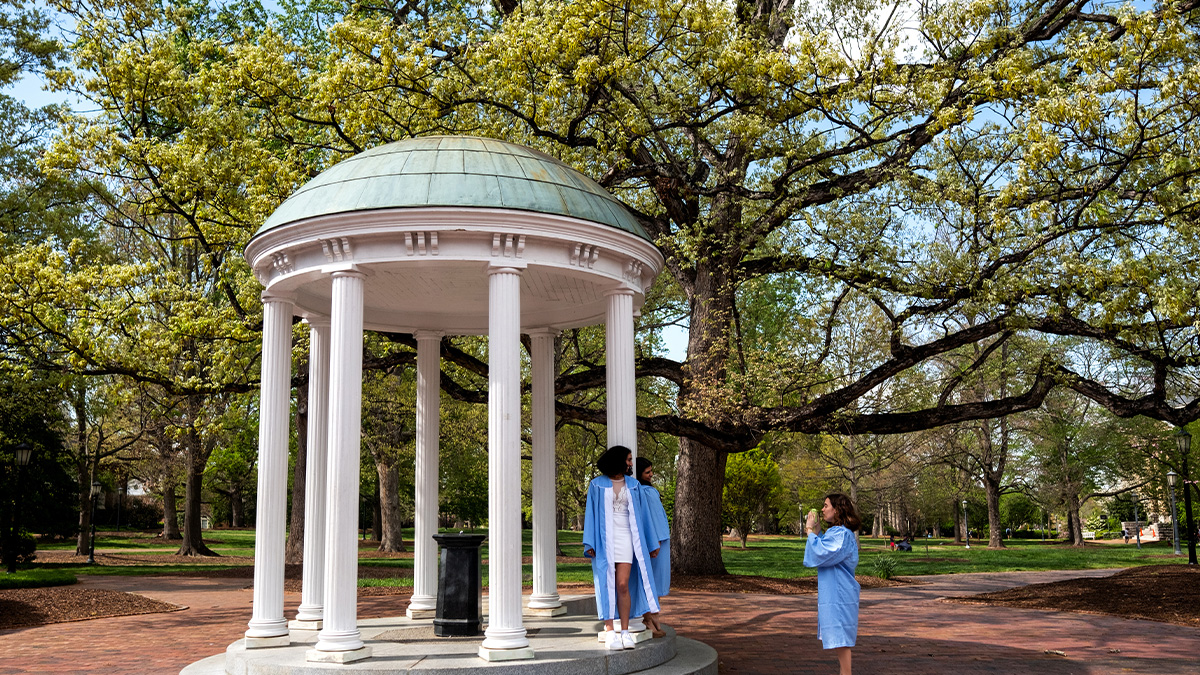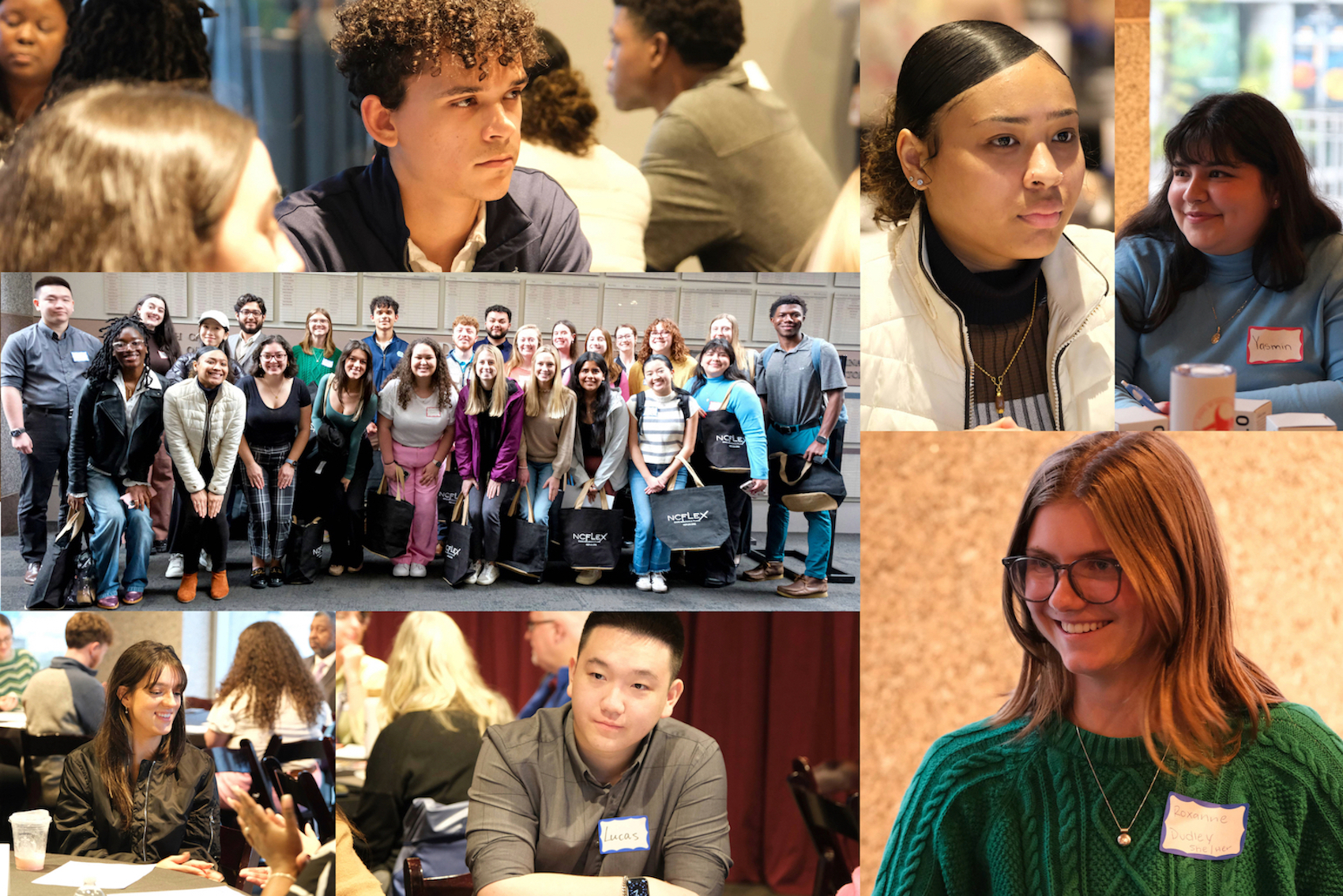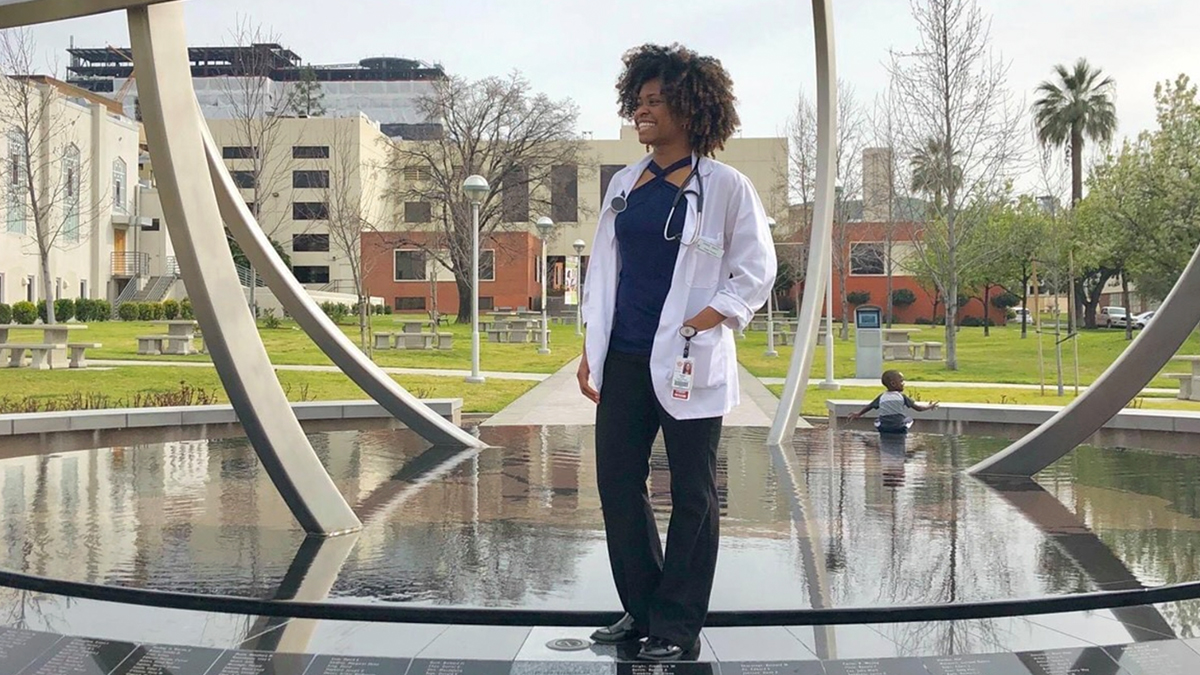Highlighting the importance of SERVICE
The large mural, called SERVICE, comes to life and brings with several events focused on family and personal sacrifice.
Carolina student Taylor McCain remembers her grandfather Franklin as someone she could always laugh with — even at 3 a.m.
So she couldn’t help but smile when she saw his likeness among the 40 notable African-American leaders in North Carolina depicted in a large mural titled SERVICE, housed at the UNC School of Government, during the Sept. 25 event “Bringing SERVICE to Life.”
The event brought together family members of several notable figures depicted in the mural, including McCain — whose grandfather was one of the Greensboro Four who participated in the Woolworth lunch counter sit-in in 1960.
“What he did on February 1, 1960, shows the kind of person that he was,” McCain said. “He was never afraid to stand up for what he believed in. A lot of the character traits that I have are rooted in what he taught me.”
SERVICE, dedicated in 2010, depicts a gathering of African-American leaders at the lunch counter of a store not unlike F.W. Woolworth in Greensboro. The mural, a single 5′ x 50′ painting, visually consists of eight panels, each representing an event, place, or particular accomplishment in the history of North Carolina.
The artist, Colin Quashie, wrote in his explanation of the piece that the reason the Greensboro Four are prominent as the chefs in the mural is “because they literally took possession of the lunch counter with their refusal to leave until served. By seeking service, they were – by extension – serving a cause greater than themselves.”
Last week’s event was part of a day filled with updates for Carolina’s Alumni Committee on Racial and Ethnic Diversity (ACRED). Chancellor Carol L. Folt addressed the group in the morning, and sessions throughout the day included information on the new Task Force on UNC-Chapel Hill History, MEASURE Evaluation and what it means for individual groups and C-STEP.
But one of the highlights was “Bringing SERVICE to Life,” an event that in many ways felt like a reunion, as guests and speakers came together with a common thread: family and personal sacrifice.
McCain was a featured speaker. Joining her were: Eric Rivera, UNC School of Dentistry Jacob B. Freedland Associate Professor and son of civil rights photographer Alex Rivera; Durham attorney and former member of the UNC Board of Visitors Chuck Watts and Eileen Watts Welch, children of North Carolina’s first African-American surgeon Charles Watts; and Abdullah Salim Jr., son of Reginald A. Hawkins, the first African-American to run for governor of North Carolina. Several other family members also attended the event.
Rivera spoke of his father’s journalistic career and the difficulty of being a civil rights photographer.
“He risked his life multiple times to cover activities in the South related to lynchings and was heavily involved in politics,’’ he said.
Watts Welch said she was surprised to find other family members in the mural, not just her father.
And Salim, founder of the UNC Black Student Movementin 1967, reflected on the life lessons passed from his parents: “[They] insisted we grow up knowing who we are and where we came from.”
He also fielded a question from a current member of the Black Student Movement on how to make the group’s current work relevant in a time when there are many competing messages and priorities.
“You can’t get something without attempting to go forward,” Salim said. “If you take the attitude that they’re not willing to listen, then you’ve already defeated yourself. What needs to be done is you never take no for an answer. Always keep striving forward.”




